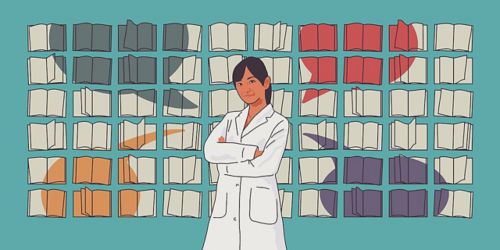St. Jude Family of Websites
Explore our cutting edge research, world-class patient care, career opportunities and more.
St. Jude Children's Research Hospital Home

- Fundraising
St. Jude Family of Websites
Explore our cutting edge research, world-class patient care, career opportunities and more.
St. Jude Children's Research Hospital Home

- Fundraising
Importance of citations in scientific research: More than just bragging rights

The power of citations reflects not only on the significance of a scientific journal, but also increase the reach of your research.
Citations. For many people, this word evokes thoughts of parking fines and traffic violations, but for scientists, citations are a key measure of success. The more citations you have, both in the form of publications you have authored and references to your publications by others, the better off you are.
The power of citations drives the ranking of scientific journals based on their impact factor. An impact factor is a pseudo-scientific measure of influence based on the average number of times a journal article has been cited by other articles during the past two years. The higher the impact factor, the better the journal is generally considered. Based on this hierarchy, publication in a journal with a high impact factor is considered the pinnacle of success.
High impact power
If you are considering a career as a research scientist, keep in mind that a welcome byproduct of high-impact publications is a career boost. These publications carry more weight when a researcher is considered for a new job or promotion. Such articles are also typically viewed more favorably by funding agencies and awards committees, further propelling a scientific career forward.
I speak from experience. A few years ago, I submitted a grant application to a national funding agency. At the time, I did not have any “impactful” publications, and the proposal was not selected for funding. I resubmitted the grant application the next year, after publishing one paper and changing little else. The application was funded. This illustrates how rapidly we can reap the benefits of such publications.
Beyond bragging rights
The value of publishing in a high-impact journal goes far beyond prestige and bragging rights, though. These journals also garner increased visibility for the research, both within the scientific community and to the general public.
The highest-impact journals typically have their own dedicated press teams and communications departments. Articles in these journals are also the most likely to be picked up by local and national news agencies for press coverage.
As a result of this visibility, articles in high-impact journals are also more likely to be subsequently referenced, or cited, in future research articles. This leads to an increased number of citations for the article, which is another common metric used by search committees, promotions committees and funding agencies when assessing scientists. A citation in a high-impact journal has a similar effect to having a manuscript published there; it increases the visibility of the work.
One way scientists who are frequently cited are recognized is through the Web of Science Group’s yearly list of Highly Cited Researchers, which was recently released for 2019. This list catalogs researchers who have the most articles in their specialty that have been ranked in the top 1% based on their number of citations in the last 10 years. Inclusion on this list serves as yet another way to boost the visibility of a scientist’s research.
The 2019 list included 18 St. Jude researchers in 12 departments as well as James R. Downing, MD, St. Jude president and CEO. Thirumala-Devi Kanneganti, PhD, of Immunology, whose lab I joined this year, is on the list as well.
Overall, citations, particularly those in high-impact journals, improve a researcher’s career trajectory and drastically increase the size of the audience who will see and read the work. At the end of the day, that is truly the goal of publishing.






